How the Process of Digestion Works
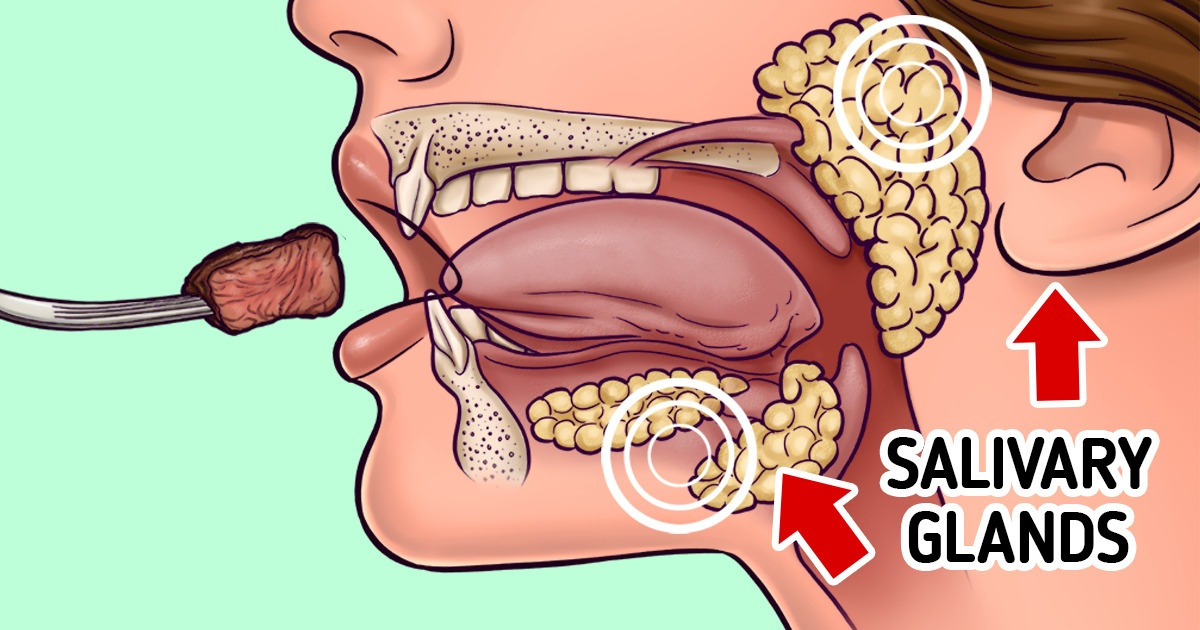
So you’re sitting at the dining table and enjoying your meal. In the end, you eat the last piece of your steak and think that you are done with it completely. However, your body requires from 2 to 5 days to completely digest your lunch, absorb all of the nutrients from it, and remove the undigested elements.
5-Minute Crafts wants to tell you how the digestion process works — from the moment you swallow food until the minute when it leaves your body completely.
1. Mouth cavity
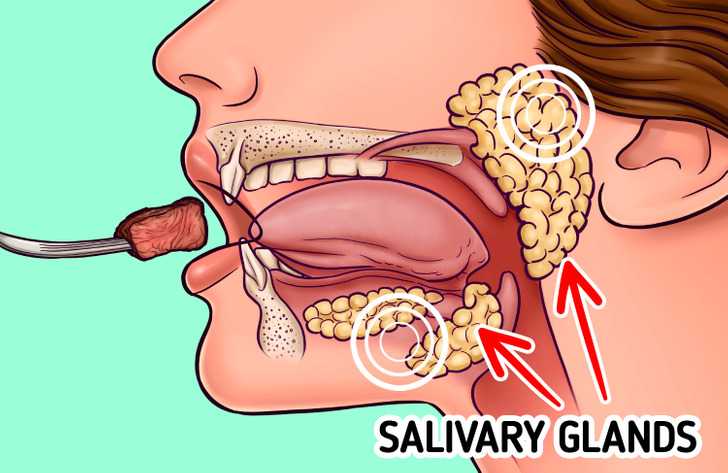
The process of digestion starts before you put food into your mouth. When you, for example, see a juicy piece of steak in front of you, your body involuntarily starts to produce saliva from just seeing and smelling the food.
Piece by piece, you send the chunks of the steak into your mouth, and your teeth spring into action. They crush and grind the meat into pieces to make the food easier to swallow. In the process of chewing, food mixes with saliva and gets partially broken down under the influence of enzymes: amylase helps to digest complex carbohydrates, while lipase helps to digest fats.
2. Esophagus
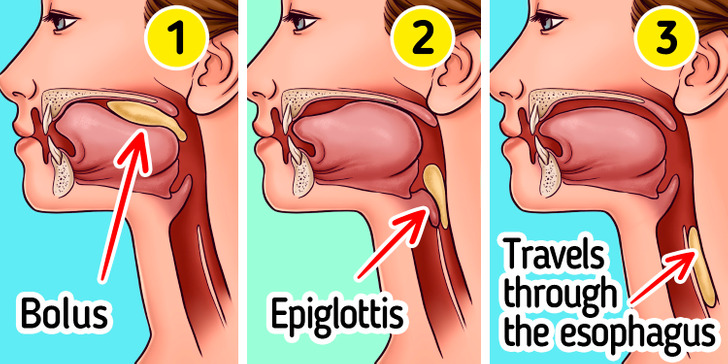
When you swallow, the chewed steak is pushed from the mouth through the pharynx and gets into the esophagus. At this time, a small elastic flap called the epiglottis closes to prevent the food from getting into the trachea. The esophagus contracts and gradually pushes food down into the stomach. This series of muscle contractions is called peristalsis.
At the junction between the esophagus and the stomach, there is a sphincter muscle that stays closed until the bolus arrives. The pressure stimulates it to relax and open after which the bolus makes its way into the stomach. Then the sphincter closes to prevent the stomach contents from getting into the esophagus. When this doesn’t happen and the food goes back up, you experience acid reflux.
3. Stomach
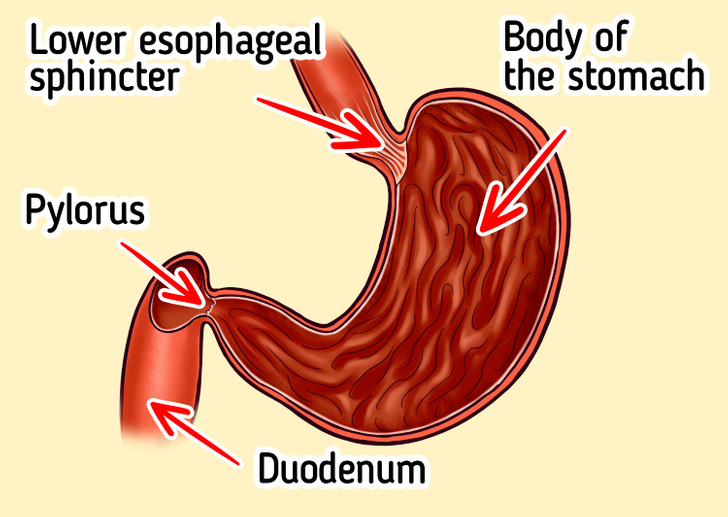
The stomach is a sac-like organ with muscular walls. There, the ground steak will turn into chyme — a thick liquid of partially digested food and digestive juices that is ready to move into the small intestines.
When food gets into the stomach, strong peristaltic contractions help mash, pulverize, and churn food into chyme. In addition, it mixes with hydrochloric acid, which is secreted by the cells of the stomach, and gastric enzymes:
- Hydrochloric acid denatures ingested proteins, destroys bacteria and viruses that remain in the food, and activates the enzyme pepsin.
- Pepsin is the main stomach enzyme that is responsible for breaking down the protein in the food into smaller particles like peptide fragments and amino acids. Thus, protein digestion starts in the stomach, unlike carbohydrates and lipids, which are broken down in the mouth.
- Gastric lipase helps to completely break down fats that come together with food.
- Gastrin stimulates the secretion of gastric acid and increases the secretion of pepsin, which provides an optimal pH for digesting food in the stomach.
The length of time that food stays in the stomach depends on the composition of the food. Foods high in fat or protein take longer to break down than those rich in carbohydrates. It takes the stomach up to 4-5 hours to complete its part of the work in the digestion process.
4. Small intestines
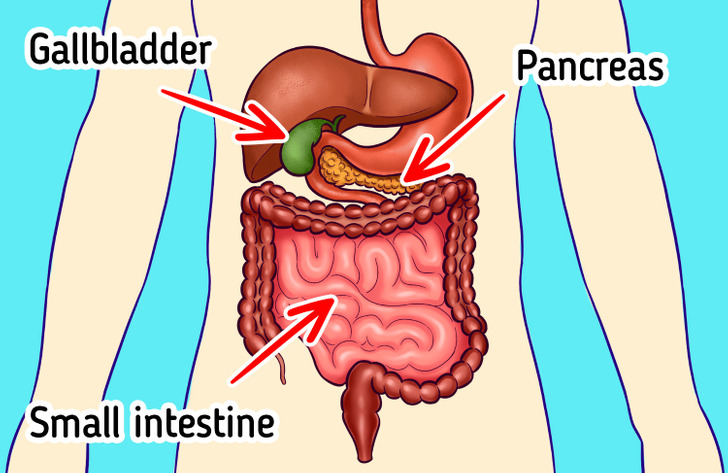
Once the contents of the stomach are processed enough, they move into the small intestine. This organ is made up of 3 segments — the duodenum, jejunum, and ileum. The small intestine is a 22-foot long muscular tube. It mixes chyme with the help of peristalsis movements and breaks it down with the help of enzymes. The latter gets into the small intestine from the pancreas and gallbladder:
- The pancreas secretes enzymes into the duodenum that break down protein, fats, and carbohydrates. It also produces insulin and passes it directly into the bloodstream. Insulin is the main hormone for metabolizing sugar.
- Gallbladder stores and concentrates bile from the liver and then releases it into the duodenum to absorb and digest fats.
The duodenum is the first segment of the small intestine. It is responsible for the final process of food breakdown. The jejunum and ileum are the next segments and they are responsible for the absorption of nutrients into the bloodstream. If your steak is made from beef, at this stage, your body will absorb vitamins (including B6 and B12) and trace elements (zinc, selenium, iron, phosphorus, and others) from it.
The contents of the small intestine are initially semi-solid, and after passing through the organ it becomes liquid. Water, bile, enzymes, and mucus contribute to the change in consistency. Once nutrients are absorbed, food leftovers move to the large intestine. The process of digestion in the small intestine takes 3-6 hours in total.
5. Liver
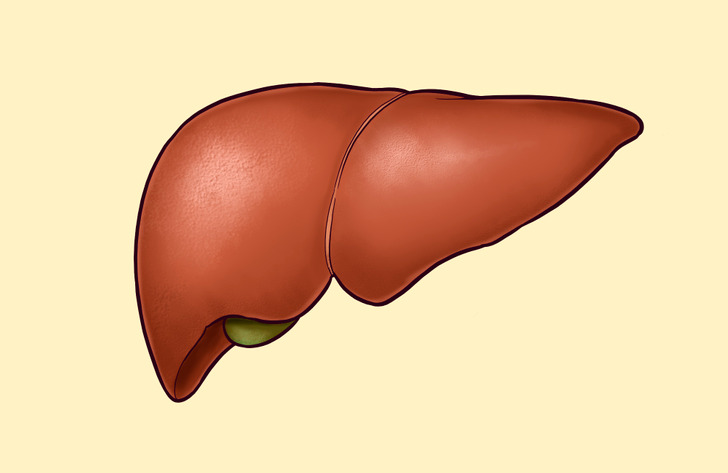
Parallel to the final processes of digestion is the processing of macro- and micronutrients obtained from the steak, which takes place in the liver. Digested nutrients pass through the absorptive cells of the intestine via diffusion or special transport proteins. Amino acids, minerals, water-soluble vitamins, and monosaccharides are transported directly to the capillaries, while large fatty acids, fat-soluble vitamins, and other lipids are transported first through lymphatic vessels. Together they move into the liver via the bloodstream.
After getting useful raw materials, the liver synthesizes nutrients, which our body requires for proper functioning. It stores them as reserves and, if necessary, delivers them to the rest of the body.
6. The large intestine
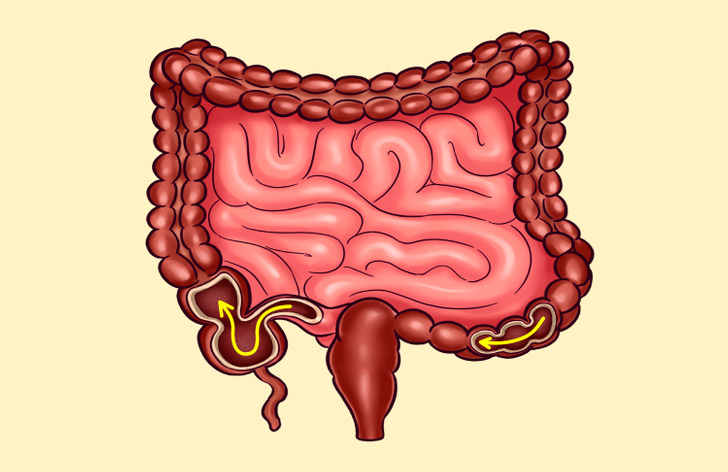
The final and longest stage of digestion takes place in the large intestine and takes approximately 30-40 hours. Less than 10% of the food consumed and which the body could not digest makes it into the large intestine. This is mainly coarse fiber, fluid, and dead cells of the mucous membranes of the gastrointestinal tract.
The large intestine is a 6-foot long muscular tube. Waste products left after the process of digestion pass through it with the help of peristalsis. They move into it in liquid form but the water is absorbed back into the bloodstream in the process of transportation and the stool becomes solid. It is then stored in the sigmoid colon until it exits through the rectum.